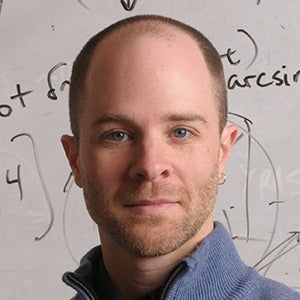The most common spec given for a quantum computer besides the number of qubits is the T1 and T2 decoherence times, both of which are based on a single qubit interacting with the environment. The quantum volume, one measure for the capability of quantum computer, combines the number of qubits, T1 and T2 decoherence times, and the physical connectivity between qubits. However, a different kind of connectivity arises in the quantum state itself, entanglement, which can make the quantum volume a poor predictor of quantum computing performance. Entanglement is delocalized in many quantum calculations, for example when simulating condensed matter systems near critical points. It is the entire quantum wavefunction which interacts with the environment, leading to the concept of many-body quantum decoherence. Using the quantum Ising model as a working example, I will show how many-body quantum decoherence combined with reservoir engineering leads to many surprises, such as more qubits being better, not worse, and the decoherence time depending on the proximity to the quantum critical point. In quantum dynamics I will demonstrate practical effects of structured, distributed entanglement on decoherence times in quantum cellular automata implemented on Google’s quantum computer. Finally, I will suggest an ideal system for exploring many-body quantum decoherence and reservoir engineering in ultracold molecules with highly controlled internal degrees of freedom.
References:
- Eric B. Jones, Logan E. Hillberry, Matthew T. Jones, Mina Fasihi, Pedram Roushan, Zhang Jiang, Alan Ho, Charles Neill, Eric Ostby, Peter Graf, Eliot Kapit, and Lincoln D. Carr, “Small-world complex network generation on a digital quantum processor,” Nature Communications v. 13, p. 4483 (2022)
- Ehud Altman, Kenneth R. Brown, Giuseppe Carleo, Lincoln D. Carr, Eugene Demler, Cheng Chin, Brian DeMarco, Sophia E. Economou, Mark Eriksson, Kai-Mei C. Fu, Markus Greiner, Kaden R. A. Hazzard, Randall G. Hulet, Alicia J. Kollar, Benjamin L. Lev, Mikhail D. Lukin, Ruichao Ma, Xiao Mi, Shashank Misra, Christopher Monroe, Kater Murch, Zaira Nazario, Kang-Kuen Ni, Andrew C. Potter, Pedram Roushan, Mark Saffman, Monika Schleier-Smith, Irfan Siddiqi, Raymond Simmonds, Meenakshi Singh, I. B. Spielman, Kristan Temme, David S. Weiss, Jelena Vuckovic, Vladan Vuletic, Jun Ye, Martin Zwierlein, “Quantum Simulators: Architectures and Opportunities,” Physical Review X Quantum, v. 2, p. 017003 (2021)
- Daniel Jaschke, Lincoln D. Carr, and Ines de Vega, “Thermalization in the Quantum Ising Model — Approximations, Limits, and Beyond,” Quantum Science and Technology, v. 4, p. 034002 (2019)
Lincoln D. Carr
Quantum Engineering Program
McBride Honors Program
Department of Physics
Department of Applied Mathematics and Statistics
Colorado School of Mines
Golden, Colorado, USA

